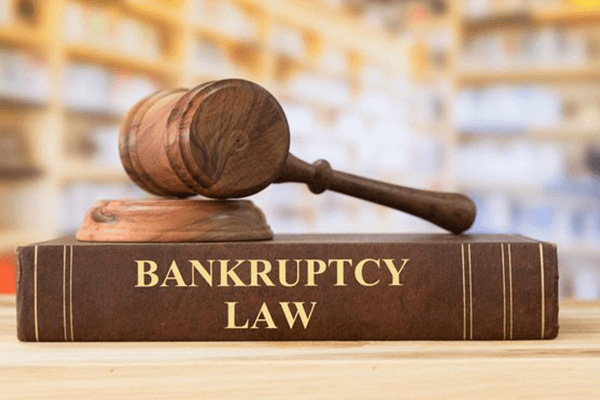
Bankruptcy is often seen as a daunting and misunderstood process. However, it can provide individuals and businesses with a much-needed fresh start when burdened by overwhelming debt. In this blog, we aim to demystify bankruptcy by exploring its various options and shedding light on its benefits and implications. Whether you’re facing financial hardships or seeking to understand bankruptcy as a potential solution, this comprehensive guide will provide valuable insights into the bankruptcy process and help you make informed decisions about your financial future.
Understanding Bankruptcy
Bankruptcy is a legal process designed to assist individuals and businesses burdened by overwhelming debt. It provides a means to eliminate or restructure debts and offers a fresh start for those struggling financially. Understanding bankruptcy involves recognizing that it is not a sign of failure but rather a proactive step towards regaining control of one’s financial situation. By filing for bankruptcy, individuals can address their debts and work towards rebuilding their financial stability.
Navigating the bankruptcy process requires thorough preparation, including gathering financial information and completing credit counseling. Seeking professional guidance from bankruptcy attorneys or credit counseling agencies is highly recommended to ensure compliance with legal requirements and to receive tailored advice. Overall, understanding bankruptcy empowers individuals to make informed decisions and explore options for a fresh financial start.
Different Types of Bankruptcy
There are several types of bankruptcy, each tailored to specific circumstances. The two primary forms of bankruptcy for individuals and small businesses are Chapter 7 and Chapter 13.
a) Chapter 7 Bankruptcy: This form of bankruptcy involves the liquidation of non-exempt assets to repay creditors. It offers a relatively quick process, typically resulting in the discharge of most unsecured debts.
b) Chapter 13 Bankruptcy: Designed for individuals with a regular income, Chapter 13 bankruptcy involves creating a repayment plan to pay off debts over a period of three to five years. It allows debtors to retain their assets while making manageable monthly payments.
Benefits and Implications of Bankruptcy
Bankruptcy offers numerous benefits and considerations that individuals should understand before deciding to proceed.
a) Debt Discharge: One of the primary advantages of bankruptcy is the potential for debt discharge, which eliminates or reduces the obligation to repay certain debts.
b) Automatic Stay: Filing for bankruptcy triggers an automatic stay, which halts collection efforts, foreclosure proceedings, and wage garnishment, providing immediate relief and breathing space.
c) Rebuilding Credit: While bankruptcy can initially impact credit scores, it also presents an opportunity for individuals to rebuild their credit over time by demonstrating responsible financial behavior.
d) Potential Consequences: Bankruptcy can have implications, such as the potential loss of certain assets in Chapter 7 bankruptcy or the need to adhere to a repayment plan in Chapter 13.
The Bankruptcy Process
Understanding the bankruptcy process is crucial for individuals considering this financial option.
a) Gathering Information: Begin by collecting financial documents, including income statements, tax returns, and a list of assets and debts.
b) Credit Counseling: Before filing for bankruptcy, individuals must complete a credit counseling course from an approved agency.
c) Filing the Petition: The formal process starts with filing the bankruptcy petition, along with supporting documents, in the appropriate bankruptcy court.
d) Meeting of Creditors: Debtors must attend a meeting with creditors and the bankruptcy trustee, who will review their financial situation and ask questions about their assets and debts.
e) Discharge or Repayment Plan: Depending on the bankruptcy type, individuals may receive a discharge of eligible debts or begin following a court-approved repayment plan.
Seeking Professional Guidance
Navigating the bankruptcy process can be complex, and seeking professional guidance from a bankruptcy attorney or credit counseling agency is highly recommended. These experts can provide personalized advice, guide individuals through the necessary paperwork, and ensure compliance with legal requirements.
Conclusion
Bankruptcy is not a one-size-fits-all solution, but it offers a viable path to financial relief for those overwhelmed by debt. By understanding the different types of bankruptcy, their benefits, and the implications involved, individuals can make informed decisions about pursuing a fresh financial start. Bankruptcy is not a magical solution that will instantly erase all financial problems, but it can provide a viable path to regain control and find financial relief. It is crucial to understand that bankruptcy is not a sign of failure or incompetence. Rather, it is a legal process designed to help individuals and businesses facing insurmountable debt.
It is essential to approach bankruptcy with realistic expectations and a commitment to making positive changes in one’s financial habits. Bankruptcy should be seen as a tool to help individuals regain their financial footing and move towards a more stable future. By understanding the intricacies of bankruptcy and seeking professional guidance, individuals can make informed decisions and pursue a fresh financial start that aligns with their long-term goals.
